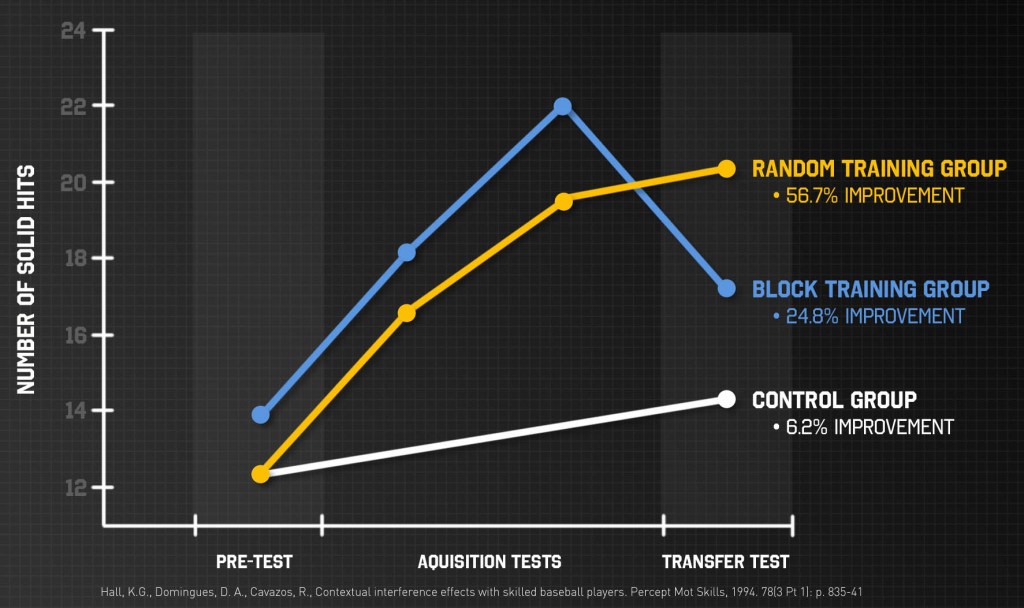I previously put forward definitions of the concepts of blocked vs. random (and constant vs. variable) training to help coaches understand the proper meaning of those terms. They are often misunderstood. So too are their implications for skill acquisition.
A consistent pattern has emerged in the research into training methods that looks like this (which I first shared here).
What we seeing is that during the training phase, blocked training is better at developing skills more quickly. When you then look at how things are after the training block, and in terms of putting those skills to use in a game situation, the situation reverses. Players trained in a blocked fashion actually backtrack in their performance. Meanwhile, those training in a random fashion not only retain the skill they developed, they actually show additional gains.
Here’s a specific example of this in volleyball using hitting vs. a block. Interestingly, in that case the blocked group didn’t actually show any gains at all, while the random group did.
Blocked better short term, random long-term
The takeaway from the research seems to be that blocked training is perhaps better for short-term skill acquisition. Random training, however, is consistently shown to be better for longer-term development and application in a match environment. This is how you can get situations where players look great in practice, but can’t perform in actual matches.
The videos I have in this post on skill acquisition for volleyball provide some explanation for why this is the case.
By the way, this short-term bump from blocked training is why kids so often come away from a clinic or camp better than when they went in. Those situations are very often highly blocked in structure by their nature. Problem is it doesn’t stick long-term.
So why use blocked at all?
If random training has consistently been shown superior in long-term skill acquisition, why would you use blocked training at all? For me, the main reason from a developmental perspective is to create and/or reinforce conceptual understanding. Let me explain using blocking as an example.
You want to teach your Middles the footwork to block an outside set. It make sense (to me at least) to used blocked reps to get them to understand the steps. Call it the initial teaching. Once you see that they have the concept, however, you want to move to a more random approach for actual skill development because that’s…
Click Here to Read the Full Original Article at Coaching Volleyball…

